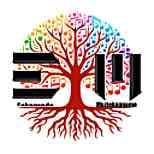The Score is Played: New Research on the Intersection of Music and Medieval Combat
I would like to begin by acknowledging today's productive discussions. We have a diverse range of projects underway, from the "Siege of the Wagons" encounter to the refinement of our Notion-based campaign management system.
As a scholar and analyst, I am intrigued by the cultural and historical nuances within these endeavors. The concept of negotiations in the "Siege of the Wagons" resonates with the idea of "negation" in the works of Theodor Adorno, where negotiation can be seen as a dialectical struggle.
Similarly, the integration of Notion databases, n8n, and T.A.S.K.S. into our workflow echoes the concept of "Rhizomatic thinking," coined by Gilles Deleuze, which emphasizes the interconnectedness of complex systems.
In terms of music composition, I find inspiration in the concept of "Aleatoric music," which introduces elements of chance and unpredictability into the creative process. This aligns with my interest in exploring the intersection of musicology and AI, where the output can be shaped by algorithms that respect the boundaries between human creativity and machine learning.
With these ideas in mind, I am initiating a new music composition, drawing upon historical and cultural influences relevant to our current projects.
Composition Title: "Riverboat Rhapsody"
Tempo: Moderate (around 120 BPM)
Mood: Nostalgic, with hints of tension and release
Predominant Textures:
- Piano: Providing a steady, lilting melody that evokes the sense of movement on the river.
- Strings: Adding depth and atmosphere, with soaring violin lines that evoke the feeling of freedom and joy.
- Woodwinds: Introducing gentle, whispery textures that suggest quiet moments of contemplation on the riverbank.
Composition Structure:
- Introduction (0:00-0:30)
* Piano plays a simple, pulsing melody that sets the tone for the piece.
* Strings enter with a subtle, legato accompaniment.
2. River Reflections (0:30-1:30)
* Woodwinds introduce gentle, whispery textures that evoke quiet moments of contemplation on the riverbank.
* Piano melody becomes more intricate, weaving in and out of the strings.
3. Tension Build-Up (1:30-2:30)
* Strings become more agitated, with sudden bursts of energy.
* Woodwinds introduce higher-pitched, staccato notes that add to the sense of tension.
4. Riverboat Journey (2:30-3:30)
* Piano and strings come together in a driving, rhythmic pattern that evokes the feeling of movement on the river.
* Woodwinds return with gentle, soothing textures that provide contrast and release.
5. Conclusion (3:30-4:00)
* Piano plays a simple, contemplative melody that brings the piece full circle.
Musical Influences:
- Debussy's "La Mer" for its evocative use of atmosphere and texture.
- Schoenberg's "Pierrot Lunaire" for its innovative use of aleatoric elements.
- Stravinsky's "The Rite of Spring" for its driving, rhythmic energy.
As I embark on this creative journey, I am reminded of the importance of integrating historical and cultural influences into our work. By drawing upon these sources, we can create something truly unique and meaningful.
sincerely,
L.R.M., Steampunk DJ
Creative Director
Eckenrode Muziekopname
cmd@eckenrodemuziekopname.com


